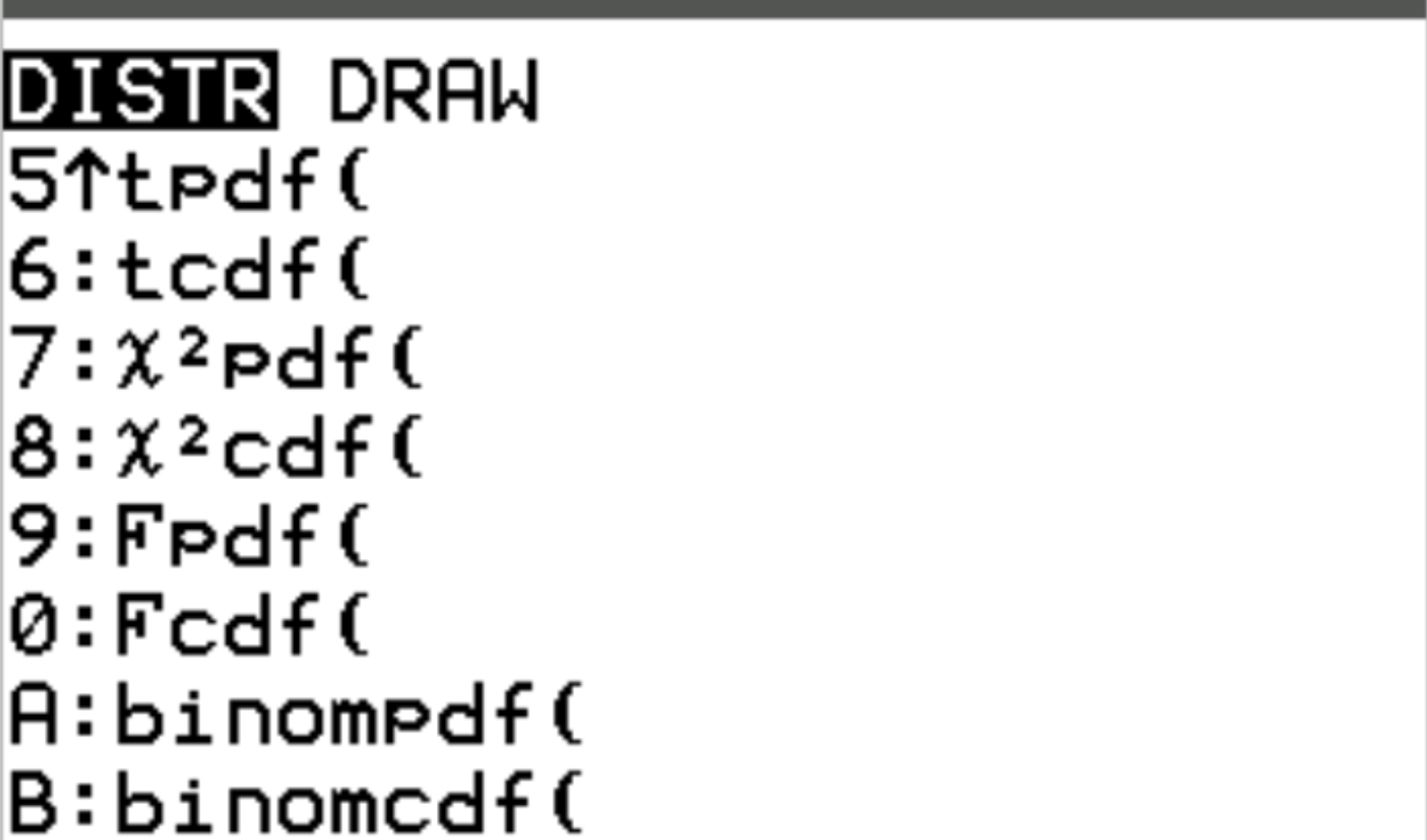The binomial distribution is one of the most commonly used distributions in all of statistics. This tutorial explains how to use the following functions on a TI-84 calculator to find binomial probabilities:
binompdf(n, p, x) returns the probability associated with the binomial pdf.
binomcdf(n, p, x) returns the cumulative probability associated with the binomial cdf.
where:
- n = number of trials
- p = probability of success on a given trial
- x = total number of successes
Both of these functions can be accessed on a TI-84 calculator by pressing 2nd and then pressing vars. This will take you to a DISTR screen where you can then use binompdf() and binomcdf():

The following examples illustrate how to use these functions to answer different questions.
Example 1: Binomial probability of exactly x successes
Question: Nathan makes 60% of his free-throw attempts. If he shoots 12 free throws, what is the probability that he makes exactly 10?
Answer: Use the function binomialpdf(n, p, x):
binomialpdf(12, .60, 10) = 0.0639
Example 2: Binomial probability of less than x successes
Question: Nathan makes 60% of his free-throw attempts. If he shoots 12 free throws, what is the probability that he makes less than 10?
Answer: Use the function binomialcdf(n, p, x-1):
binomialcdf(12, .60, 9) = 0.9166
Example 3: Binomial probability of at most x successes
Question: Nathan makes 60% of his free-throw attempts. If he shoots 12 free throws, what is the probability that he makes at most 10?
Answer: Use the function binomialcdf(n, p, x):
binomialcdf(12, .60, 10) = 0.9804
Example 4: Binomial probability of more than x successes
Question: Nathan makes 60% of his free-throw attempts. If he shoots 12 free throws, what is the probability that he makes more than 10?
Answer: Use the function 1 – binomialcdf(n, p, x):
1 – binomialcdf(12, .60, 10) = 0.0196
Example 5: Binomial probability of at least x successes
Question: Nathan makes 60% of his free-throw attempts. If he shoots 12 free throws, what is the probability that he makes more than 10?
Answer: Use the function 1 – binomialcdf(n, p, x-1):
1 – binomialcdf(12, .60, 9) = 0.0834